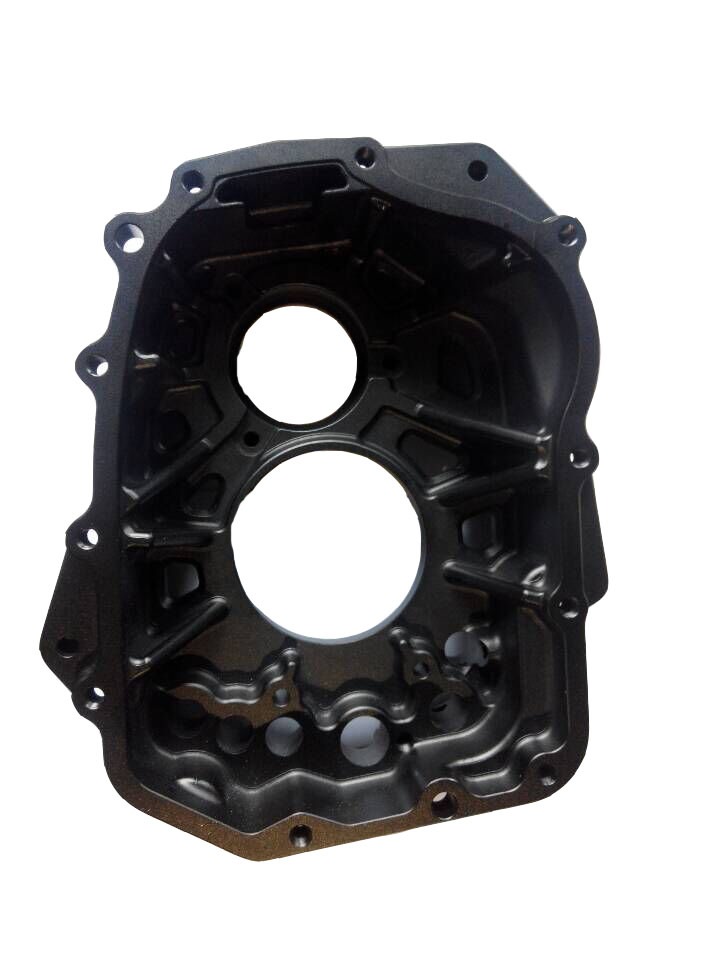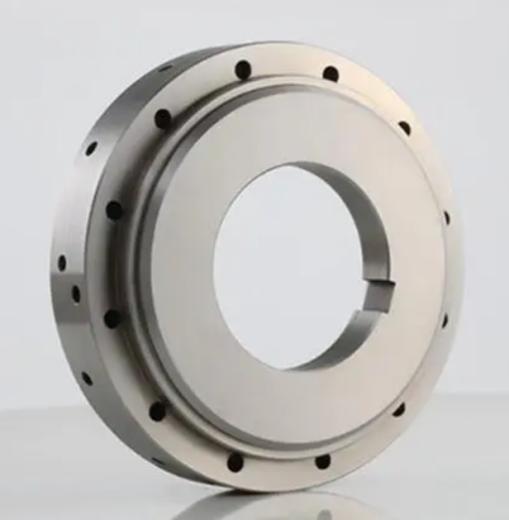Aluminum’s unique set of properties has made it a key material in a variety of industries. Its lightweight nature, combined with impressive strength and versatility, enables engineers to design high-performance components. However, realizing the full potential of aluminum frequently necessitates precise machining. This article delves into the world of precision-machined aluminum parts, exploring the numerous advantages they provide across a wide range of applications. We’ll then walk you through the fundamentals of CNC aluminum machining, giving you a glimpse into the process of converting raw aluminum into intricate and functional parts. Finally, to ensure you work with the right manufacturer for your project, we’ll go over key factors to consider when choosing a precision aluminum parts supplier.

Benefits of Using Precision Machined Aluminum Parts
| Benefit | Description | Example Applications |
| High Strength-to-Weight Ratio | Aluminum strikes a good balance between strength and lightweight. It is denser than plastic, but much lighter than steel. | Ideal for applications requiring weight reduction, such as aircraft components, automobile parts, and bicycles. |
| Machinability | Compared to harder metals such as steel, aluminum is softer and easier to machine. This leads to faster production times and lower machining costs. Manufacturers benefit from reduced production costs for complex parts. This makes aluminum appropriate for electronic enclosures, medical devices, and consumer goods. | Manufacturers benefit from reduced production costs for complex parts. This makes aluminum appropriate for electronics enclosures, medical devices, and consumer goods. |
| Versatility | A wide range of aluminum alloys meet specific requirements. Alloys can be chosen for their high strength, improved corrosion resistance, or electrical conductivity. | Allows for parts with specific functionality. For example, some aerospace components require high strength, whereas electrical housing may prioritize conductivity. |
| Dimensional Accuracy | CNC machining ensures that parts are manufactured to precise dimensions and tolerances. This is critical for components that must fit together perfectly. | Required for components in medical devices where precise tolerances ensure proper functionality. Also important in automotive and aerospace applications where parts must interchange seamlessly. |
| Durability | Aluminum parts can be very durable, especially when properly finished and coated. This guarantees that they can withstand wear and tear over time. | Suitable for applications that require long-lasting parts, such as machine components, building materials, and structural elements. Proper finishing (for example, anodizing) increases durability. |
| Recyclable | Aluminum is an environmentally friendly option because it can be recycled repeatedly without losing its properties. This reduces the environmental impact. | Contributes to a more sustainable manufacturing process. Widely used in consumer electronics and automotive parts, where recycling is becoming increasingly important. |

How to CNC Aluminum
CNC machining is an excellent way to produce precise and intricate aluminum parts. Here’s a breakdown of the main steps involved in CNC aluminum machining.
Preparation
- Material Selection: Different aluminum alloys have distinct properties that make them suitable for specific applications. Choose an aluminum alloy that meets your project’s machining, strength, and weight requirements.
- Design: Make a 3D CAD model of your part. This model will be used to create toolpaths for the CNC machine. Popular software choices include Fusion 360 and Inventor.
- CAM Software: To create toolpaths from your 3D model, use CAM (Computer-Aided Manufacturing) software. The CAM software will use the geometry of your model to define the movements of the CNC machine’s cutting tool.
Machining
- Machine Setup: Use clamps or a vise to firmly secure your aluminum stock to the CNC machine’s table.
- Tool Selection: Choose an appropriate CNC router bit or end mill for your project. Carbide end mills are commonly used for aluminum because of their durability and ability to handle higher cutting speeds.
- Feeds and Speeds: To achieve optimal cutting performance, adjust the feed rate (material movement) and spindle speed (cutting tool rotation). Refer to the manufacturer’s recommendations for your particular aluminum alloy and cutting tool.
- Machining Process: The CNC machine will follow the programmed toolpaths, removing material from the aluminum block to produce the desired part. Depending on the complexity of the part, multiple passes with different cutting tools may be required.
- Coolant: CNC aluminum machining is best done with a coolant such as flood coolant or mist coolant. It lubricates the cutting tool, prevents chip welding (when aluminum adheres to the tool), and improves surface finish.
Finishing
- Deburring: After machining, your part may have sharp edges or burrs. To remove these safely and cleanly, use deburring tools or hand files.
- Sanding/Polishing (Optional): To achieve a smoother finish, hand-sand or polish the aluminum part to your desired aesthetic.

What Factors Should I Consider When Choosing a Manufacturer for Precision Machined Aluminum Parts?
Selecting the right manufacturer for your precision-machined aluminum parts is critical to project success. Here’s a breakdown of the main factors to consider:
1. Experience
- Track Record: Look for a manufacturer with a track record of working with aluminum, particularly with your preferred alloy and similar part complexities.
- Industry Expertise: Consider their experience in your industry. Understanding the typical applications and tolerances of your industry can help the manufacturer approach your project with the necessary knowledge.
- Tight Tolerance Capabilities: Precision machining often requires tight tolerances. Assess the manufacturer’s ability to consistently meet the specific tolerances for your parts. Look for documented examples of their work that meet similar tolerance requirements.
2. Capabilities
- CNC Equipment: Check that they have the necessary CNC machinery (e.g., 3-axis, 4-axis, or 5-axis milling machines) to handle the complexity of your components. Complex designs may necessitate specific multi-axis machining capabilities.
- Tooling and Fixtures: Ensure they have the necessary tooling (cutting tools, jigs, clamps) to efficiently machine your parts while maintaining accurate dimensions. Special tooling may be required for unique features or tight tolerances.
- Finishing Expertise: If your project requires additional finishing processes (e.g., anodizing, powder coating), ask if they provide these services in-house or work with a reputable finishing provider.
3. Quality Control
- Inspection Procedures: Learn about their quality control procedures. They should have a documented system for inspecting parts at various stages of production to ensure that dimensional accuracy, surface finish, and overall quality meet your requirements.
- Quality Certifications: Look for manufacturers who have relevant industry certifications, such as ISO 9001, which show their commitment to quality management systems.
4. Lead Time
- Production Capacity: Evaluate their current workload and capacity to complete your project within the timeframe you specify. Consider the number of parts required and their typical production volume.
- Communication and Transparency: Ensure that they communicate clearly about lead times and potential delays. Transparent communication throughout the process helps to manage expectations and avoid project bottlenecks.
5. Cost
- Competitive Quotes: Obtain quotes from multiple manufacturers. While cost is important, choose quality and capabilities over the cheapest option.
- Breakdown of Costs: Request a detailed cost breakdown, including machining, material, finishing, and any additional fees. This transparency enables you to compare quotes accurately.
- Value for Money: Consider the overall value proposition. The most expensive quote may not always be the best option if it does not guarantee the desired quality, capabilities, or on-time delivery.

Conclusion
Understanding the benefits of precision-machined aluminum parts and the complexities of CNC machining allows you to make informed project decisions. Selecting the right manufacturer is critical to achieving the desired quality, functionality, and timely delivery of your parts. Whether you’re a seasoned engineer or just getting started with precision aluminum machining, this article will provide you with valuable information to help you navigate this versatile and high-performing material. Remember that precision-machined aluminum parts provide a powerful combination of lightweight strength, design flexibility, and long-lasting durability, making them an appealing option for a variety of applications.









